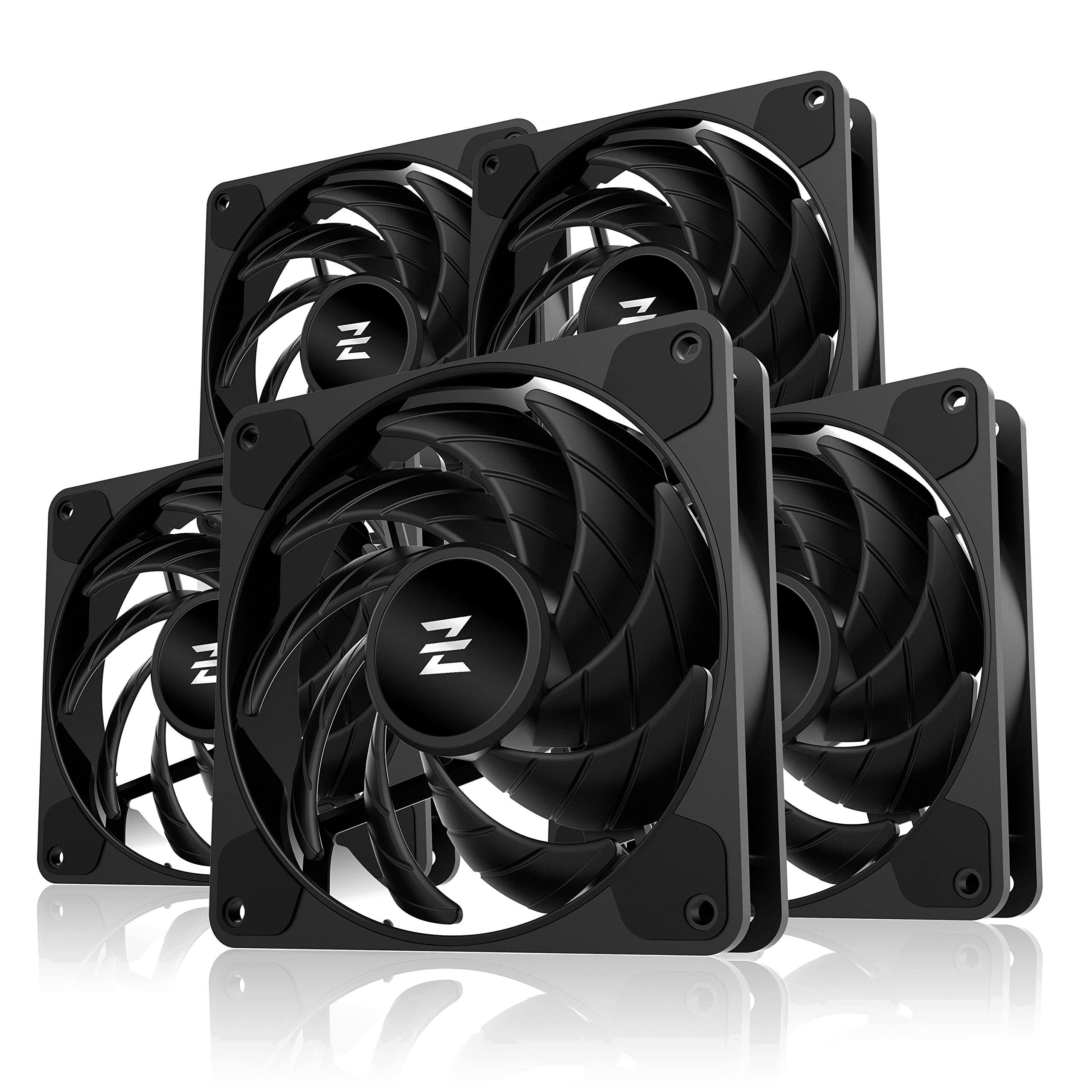PC Fans are an essential part of any computer system. They are responsible for keeping the internal components of your computer cool by circulating air throughout the system. Without proper cooling, your computer can overheat, resulting in damage to your hardware and even system failure.
When it comes to choosing the right PC fan, one of the most important factors to consider is the fan speed, which is measured in RPM or revolutions per minute. The higher the RPM, the faster the fan spins, and the more air it can move through the system.
Most CPU fans run at around 5000 RPM, which is more than enough to keep your system cool. However, some users prefer a quieter system, which is where lower RPM fans come in.
While a fan speed of 1000-1200 RPM may seem low compared to the standard 5000 RPM, it can still be effective in keeping your system cool as long as you have adequate airflow. However, it’s important to note that lower RPM fans typically generate less pressure, which means they may not be as effective at moving air through the system.
After testing a number of “low noise” fans, I found that a fan speed of at least 1000-1500 RPM is necessary to generate enough pressure to move air through the system. Anything lower than this may not be enough to cool your system effectively, especially if you’re running demanding applications or hardware.
Ultimately, the ideal fan speed for your system will depend on your specific needs and preferences. If you prioritize a quieter system, a lower RPM fan may be suitable as long as you have adequate airflow. However, if you want to ensure optimal cooling performance, a higher RPM fan may be necessary.
Choosing the right PC fan is essential for keeping your system cool and preventing damage to your hardware. While a fan speed of 1000-1200 RPM can be effective as long as you have adequate airflow, a higher RPM fan may be necessary for optimal cooling performance. It’s important to consider your specific needs and preferences when choosing a PC fan to ensure that you get the best possible performance from your system.
Is 1200 RPM Enough to Cool a PC?
A CPU fan spinning at 1200 RPM may be sufficient for some PC setups, depending on various factors such as the type of CPU, the size of the heatsink, and the overall airflow within the system. However, it is important to note that the optimal fan speed for a PC can vary depending on the specific use case, as well as the ambient temperature and humidity in the environment.
If the CPU fan is not able to maintain the desired temperature range, it may lead to overheating and potential damage to the hardware. It is recommended to consult the manufacturer’s specifications for the CPU and heatsink, as well as conduct regular monitoring of the system’s temperature to ensure optimal performance.
In addition, other factors such as noise level and energy consumption should also be taken into consideration when selecting a fan for your PC. A fan with a lower RPM may produce less noise and consume less power, but may not provide enough cooling for more demanding tasks.
While a 1200 RPM fan may be sufficient for some PC setups, it is important to consider various factors such as the CPU type, heatsink size, and ambient temperature to ensure optimal performance and avoid potential damage to the hardware.

Are 1500 RPM Fans Good for Cooling?
When it comes to choosing a fan, one important factor to consider is the RPM (revolutions per minute) rating. Fans with higher RPMs typically generate more airflow and pressure, which can be beneficial in certain situations. A fan with 1500 RPM is generally considered a good option for most applications, as it can provide sufficient airflow while still remaining relatively quiet. It’s worth noting, however, that factors such as fan size, blade design, and motor efficiency can all impact the overall performance of a fan, so it’s important to choose a model that is appropriate for your specific needs. Ultimately, the best way to determine if a 1500 RPM fan is right for you is to evaluate your specific airflow requirements and compare them to the specifications of the available options.
Conclusion
PC fans play a crucial role in maintaining the temperature of your computer’s components. It is important to choose a fan that is compatible with your system and provides adequate airflow. While low-noise fans may seem appealing, it is important to note that they may not generate enough pressure to effectively cool your system. It is recommended to aim for a fan speed of at least 1000-1500 RPM to ensure proper airflow. Additionally, regular cleaning and maintenance of your PC fans can prolong their lifespan and prevent overheating issues. investing in a high-quality PC fan can greatly benefit the performance and longevity of your computer.








